Landscape Plan Complete Guide
Edraw Content Team
Do You Want to Make Your Landscape Plan ?
EdrawMax specializes in diagramming and visualizing. Learn from this landscape design complete guide to know everything about landscape plan. Just try it free now!
Did you buy a barren land where you wish to grow a particular herb or plant several different fruit trees? Well, in that case, you and your team require Landscape Planning. For those who are not that versed with the term Landscape Planning, let us help you understand it in detail - The architects primarily use landscape plans or landscape designs to plan the layout of an outdoor area where you need to plant new trees. It should be noted here that a Landscape Plan plays an important role in architectural layout and design. In short, a Landscape Plan is a complete landscape design that details all the elements for the new landscape. As Henri Frederic Amiel said,
"Any landscape is a condition of the spirit."
In this complete guide to understanding Landscape Plans, we will walk you through different types of Landscape Plans, the benefits of creating a landscape plan before you go ahead and start building your house, how to draw a landscape plan more traditionally, and how easy it is to draw a landscape plan using EdrawMax or EdrawMax Online. Before we dive into all the different types of Landscape Plans, let us understand what a landscape plan is and how it is different from a traditional Garden Plan design.

1. What is a Landscape Plan
Like creating a floor plan for the house, several architects prefer using a Landscape Plan to site the outdoor area. Landscaping Planning or Landscaping Design visually illustrates the scenery of the natural world with the views that impact the creator. One of the primary goals of creating a Landscape Plan is to ensure that the harmonious relationship between nature and man remains intact.
A lot goes into Landscape Planning, like developing and applying multiple strategies, policies, and plans to create a successful environmental area that benefits the current and coming generations. As we see here, both Garden Plan and Landscape Plan involves the design, planning, and maintenance of the land that you will use for plantation or irrigation, but garden planning usually involves only the plants in general space, while the landscape plan covers the overall, encompassing area that contains the plants.
Based on the different usage and characteristics, there are different types of Landscape Plans. Many architects try to encompass the best of these plans as per the property or land they have, but always ensure that landscape planning is about creating a sustainable environment and ensuring the ecosystem remains cost-effective and how best one can preserve nature.
Both Garden Plan and Landscape Plan involves the design, planning, and maintenance of the land that you will use for plantation or irrigation, but garden planning usually involves only the plants in general space, while the landscape plan covers the overall, encompassing area that contains the plants.
2. The Types of Landscape Plans
- Site Analysis
- Bubble Plan
- Plot Plan
- Concept Images
- Renderings/Perspectives
- Planting Plan
As the name suggests, Site Analysis generally involves taking pictures of the landscape and noting all the key elements such as existing structures and plant materials. As the right-hand thumb rule suggests, a Site Analysis Landscape Design shows all the existing structures and features that will have a long-term impact on the land. For instance, details about houses, garages, property lines, and more come under analyzing the site.

Source: Pinterest
A Bubble Plan is used to draw colored circles or bubbles to some designated areas that serve specific purposes. For instance, let us suppose there is a well on the land. As a designer, you would like to draw a bubble around it and put a label next to it so your architect or client will easily understand the usage of that particular region. It should also be noted here that a bubble plan in a landscaping plan is not a complex drawing but is generally a top-down view of an existing property.

Source: Better Homes
A Plot Plan in a landscape design illustrates the entire landscape's features, layout, dimensions, and important structure. In an architectural design, a plot plan is a drawing that provides detailed information about the property's location. By creating and sharing a plot plan, your architect will help you decide the best possible way ahead when you start working on your landscape. In general, a plot plan of a landscape design consists of buildings, decks, sheds, pools, water supply, and other important landscape features. In addition to this, a plot plan also adds details about the adjacent property or some building.

Source: Mother Earth Living
In the architectural world, a landscape concept design is generally a base plan that illustrates how the landscape will perform after its completion. In simpler terms, Concept Images in Landscape Planning provides pictures or images of the components or features that were included in the plot plan. For instance, if you add a picture of an outside couch or a pool, your end-user or client will get a brief idea of how it will look after the team designs the landscape.

Source: David Rowley Design
In architecture, landscape rendering or perspective is a well-crafted work that illustrates the landscape area in a project plan. Sometimes, the landscape rendering is a 3D layout that requires properly measuring the elements and putting them together to bring out a complete land structure. There are several benefits of creating a landscape rendering plan, like it gives a real-life look of your landscape design, it will help save time and cost, easily lets you express your idea, and more.

Source: Dave's Garden
A Planting Plan will help you understand what kind of plants you need to have in your landscape design. By creating an elaborated planting plan, you will get an idea about the quantities, location, size, shapes, and types of different plants that your architect team will use in the property. In general, a planting plan visually illustrates the specifics of the plants that one intended to put in the landscape. In addition to the quantity and size of different plants, a planting plan will also consider important factors in the garden that may have a larger impact on the plants that grow in the landscape.

Source: Edibal Milwauke
No matter what kind of landscape plans you choose, the first thing you need to set is to measure your place, then choose the landscape plans that perfect for you. Except the landscape plans listed, there are more kinds of landscape plan types that you may need to search.
Landscape plans can be classified into site analysis , bubble plan, plot plan, concept images, renderings/perspectives, planting plan.
3. Benefits of Landscape Plan
Just like your house needs a floor plan or your kitchen needs a kitchen floor plan, your landscape requires special attention when you plan to start using it to grow flowers, plants, or trees. Landscape Plan aids in the aesthetic appeal as it entails planning the space outside the building.
Apart from giving your landscape property a more aesthetic feel, a landscape design also allows you to maximize the use of your yard spaces. In a general sense, it goes beyond creating a visual scenery and helps connect nature and protect natural wildlife. There are a couple of important benefits of creating a Landscape Plan, like:
- A well-crafted Landscape Plan helps you materialize your visual design ideas.
- With a Landscape Plan, you can utilize the area most prominently.
- The moment you finalize your Landscape Plan, you will automatically get a list of the things you need to purchase that will go along in your landscaping area.
- Since you already have a landscape plan ready with you, the chances of human error are almost nil.
- With the correct dimensions, you will know the perfect objects you desire to add to your property.
- Aesthetic landscape planning adds key elements, like line, form, texture, color, and scale.
- Remember that well-planned landscape planning might also increase the property of your value by a lot. This comes in handy if you are planning to resell your property.
- A good landscape plan will encourage you and your family members to stay more in nature and enjoy the natural habitat.
- If you have planned a good landscape design, it will also help your pets roam around easily. You can even dedicate a particular region for your children to play around.
- Materialize what visual design ideas you have;
- Utilize the area most prominently;
- Reduce the error of landscape design;
- improve the working efficiency.
4. Preparations Before Starting Landscape Plan
Now, as you have decided to go ahead with a landscape plan, you should be aware of a few points before you start designing the landscape plan. Unlike a garden plan, which you can modify in a couple of years, a landscape plan will take a lot of effort and resources. So, it is always recommended to properly follow the simple steps that are a must before you lay out your thoughts and vision to create the landscape plan.
- Understand the Land
- Understand the End-User
- Plan a Theme
- Create & Link Spaces
- Consider Plants
- Structure the Planting
- Plan it ahead
- Protect the Resources
Even before you start laying out the basic framework of the landscape plan, you should go out and learn about your land. Understand the regional climate, the topography of the landscape site, and the type of soil already present on the land. For instance, if you live in a hot place like India or Australia, you will have to think about adding the shades. However, if you live in a country like the United States or Ireland, you have to think about snowfall and how you can protect your land from sudden rain! In order to understand your land correctly, you can break it down into four categories: partial shade, shade, full sun, and deep shade.
Before you start planning the landscape design or considering how well you can design a landscape plan, think about the end-user who will use the place. For instance, if an elderly couple uses the landscape, you will have to add multiple resting places. If there are going to be children or household pets who will spend most of their hours in the landscape, you have to add additional security factors into it! In most cases, you have to ask yourself how much time you can spend in the landscape area to maintain and preserve your decorations.
Ask any builder or an architect about landscape planning, and the first thing they are going to ask you is about the theme that you wish to implement in your land. As the name suggests, a theme unifies your landscape and helps you understand what kind of plants, hardscapes, and elements you will need to decorate the property. When deciding on a property theme, a good place is to understand the money you can spend and how well the theme can complement your own house. If you are dedicating the landscape to your children, creating the theme in and around the kids would be a great way to start.
Consider that landscape designing is nothing but an extension to what you have designed in any other room in your house. Before you plan, always consider what kind of materials you will use to decorate your landscape. Landscape Plans include the addition of natural elements like flowers, trees, and grass, as well as manufactured hardscapes like lawn furniture, fountains, and sheds. As you will learn, Landscape Plan is about encompassing the outdoor area and aids in the decision-making process for selecting materials.
It is always recommended to properly research your plants before designing the layout for your landscape. At the same time, understanding your nature, the quality of soil, and the weather conditions will also help you choose the right plant. For instance, some indoor plants will not survive if you put them in the land property with too much sun! Some fruit and berry trees require a different kind of soil to grow. Before planning the landscape, also think about the area's light levels, winds, temperature, and other external factors. Consider growing large fruit or vegetable trees on the outside if you need to block the sun rays or the outside noise.
Always consider your various visual planes when selecting your plants. Remember that structures do not always imply walls and terraces but include choosing natural resources, trees, and shrubs. As you plan your landscape design, consider the various visual planes that will help you select the right plants. Consider the ground plane, including several hardscapes and gardening components. This way, you will clearly understand how closely spaced or far apart your plants will grow on your property.
It is always advisable to think about the future when designing a landscape plan for your property. For instance, if you plan to have children, you should add fencing or play areas in advance. If you wish to grow some organic or herbal plants, then ensure you have chosen the right land for your property. If you wish to grow certain staple foods, ensure enough lighting and water supply. Remember that you can only design a landscape once, and if you need to make changes to your actual property, it will cost you a lot and might waste all of the hard work you did in decorating the space.
By choosing resource-efficient plants and choosing environmentally sound hardscapes, you can help preserve your environment in the long run. When planning the modifications to your landscape, always consider installing a rainwater collecting system that will provide you with an ample amount of water for irrigation purposes. The use of non-toxic preservatives, paints, cleaners, and friendly hardscapes is another important vertical that you can incorporate in your landscape planning.
Only have a detailed preparation can people to have a good base of landscape design. Once have prepared the landscape elements, you may move into next step.
- Consider the site, understand the regional climate, the topography of the landscape site, and the type of soil already present on the land;
- Consider the end-user who will use the place;
- Consider a theme unifies your landscape and helps you understand what kind of plants, hardscapes, and elements you will need to decorate the property.;
- Consider your plants before designing the layout for your landscape.
5. How to Design a Landscape Plan in General
If you are planning to create your Landscape plan in general, then there are two ways that you can go through. The first is a traditional way that requires you to go out in the field, measure the area, think about the landscape, click pictures, share them with your team, and more! Another is a much simpler step that lets you create your landscape plan within a few minutes. However, before we dive into the easy way, let us walk you through the complicated process you must follow to create a landscape plan in general.
Step 1: Outline the Edges of Your Property
Even before you create the landscape plan, you should go out and measure the property with the help of a measuring tape. Once you have noted down the area, come back to your study room and start creating the outline of your property. This way, you will be able to outline the edges of the landscape that you can use to add hardscapes and other components.
Step 2: Place Buildings & Existing Features
Every landscape design is incomplete without a building or an architecturally sound area. Consider adding the building plans you might have currently or might add in the future. Placing the building and adding the existing features, like well, ornamental hedges, and more, in your design will help you understand your area clearly. Such features will also help you decorate the landscape with minimal resources.
Step 3: Add Hardscapes
As the name suggests, hardscapes are thought of as hard yet movable parts of the garden or landscape. Common hardscapes are gravel, stones, pavers, outdoor kitchens, gazebos, decks, retaining walls, driveways, and more. In some cases, hardscaping can help prevent water absorption by providing aesthetics to your outdoor space. Consider adding those hardscapes in your landscape design that go along your landscape theme and come under your budget.
Step 4: Draw in Lawn & Garden Beds
Garden beds and walking lawns are one of the most important parts of a landscape design. Garden Beds consist of soil, grass clippings, dead leaves, and cardboards. By adding the right garden beds (sometimes the raised bed gardening), you will have fewer weeds, better water retention, more growing space, warmer soil for a longer season, and more. Consider adding them in the relevant areas as you plan the landscape.
Step 5: Add Landscape Elements
An aesthetic landscape design has a few major elements, like line, form, texture, color, and scale. With the right balance of all these elements, you can create an appealing landscape design. In Landscape Planning, lines help highlight a design feature like a pond; form refers to the shapes of the plants; color is the key element of decoration; texture applies to both softscape and hardscape, and scale is about the height and width of the overall composition.
Step 6: Find Correct Spots
Once you have measured the landscape properly, you can start finding the right sports for your trees and shrubs. If you have a huge property, you can have several large tree layouts in the front. If you have limited space, you can opt to get one large tree in the front and assemble smaller berry trees next to it. Remember not to go overboard with the trees and shrubs, as it will jeopardize your efforts to decorate the landscape.
Step 7: Click Pictures to Share
Since you are working alone, always click multiple pictures of your property and hand-drawn design. You can share these pictures with your architect, builder, or family advisor to get their opinion and feedback about the landscape planning. Once shared, your architect can help you understand what you did right and what changes have to be done to design the landscape plan correctly.
Step 8: Take Revisions
After receiving the feedback and opinion from your architect or builder, you can start making the revisions that will go according to your layout and fall under your budget. Remember, the revisions are very important, and it is best to have multiple of them before you finalize the landscape design. Always note all the revisions in a separate notebook or sheet, so even if you wish to compute the previous changes, you have already jotted down the important points.
Step 9: Finish off the Plan
Once you have layout the important areas noted down the elements, features, and components, you can finish off the landscape plan. You can click multiple pictures of this blueprint and share it with your architect or builder, who will go ahead and start working on the landscape design. Remember to have such landscape designs handy if you need to make certain changes in the future or if your theme idea changes.
- Outline the Edges of Your Property;
- Place Buildings & Existing Features;
- Add Hardscapes;
- Draw in Lawn & Garden Beds;
- Once you have measured the landscape properly, you can start finding the right sports for your trees and shrubs.;
- Once you have measured the landscape properly, you can start finding the right sports for your trees and shrubs.;
- Once you have layout the important areas noted down the elements, features, and components, you can finish off the landscape plan.
6. How to Design a Landscape Plan in EdrawMax
Now that you have seen the elaborate steps of designing a landscape plan, you can opt for EdrawMax Online to easily create the same. Unlike hand-drawing, which has several limitations, designs from EdrawMax are correctly formatted and can be attached to your properties' final blueprint plans. There are only a couple of easy steps that you have to follow to draw a landscape plan.
Instead of wasting time drawing a landscape plan on paper, you should look for a way to design a landscape plan easily. EdrawMax is well equipped to design a landscape plan. There are only a couple of steps that you need to follow in order to easily create it, like:
Step1 Open EdrawMax and Login
If you are using the offline version of EdrawMax, then open the tool in your system. If you wish to have remote collaboration, head to https://www.edrawmax.com/online/ and log in using your registered email address. If this is your first time using the tool, you can register yourself using your personal or professional email address.

Step2 Create Outlines
If you understand what kind of landscape design you wish, you can easily create the outline in your vector-based dashboard. If this is your first time accessing any drawing tool, simply head to the template section and look for garden templates or landscape templates. All the templates available at EdrawMax are 100 percent customizable, which helps you easily modify the layout according to your needs.

Source: EdrawMax
Step3 Massive Landscape Symbols
EdrawMax is equipped with over 50,000 vector-based symbols, which means these symbols can easily be rotated, colored, modified, and stretched. In the library section of EdrawMax, look for the landscape symbols, like deciduous tree symbol, evergreen tree symbol, grouping example, evergreen shrubs, and more. Just click on them, and they will easily be imported into the dashboard.


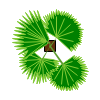

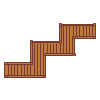

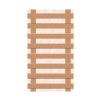
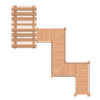
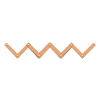






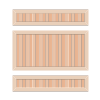
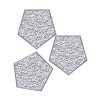

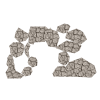

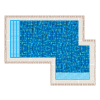



Know more about landscape symbols, and try to drag and drop the symbols you want to customize your landscape plans.
Step4 Add Hardscape to Garden
Any landscape design is incomplete without the addition of hardscapes. Look for such in the library section and add them according to your plan and vision. Some hardscapes can be a brick patio, stone wall, wooden arbor, and more.

Step5 Add more details
After adding and modifying the hardships and elements of your landscape plan design, you can add more relevant details. For instance, you can label the adjacent buildings and add different color textures; you can also talk about the kind of soil you prefer and more.

Step6 Export or Share
Once your landscape design is ready, you can easily share it using EdrawMax's special sharing feature. This garden and landscape designer lets you export your file in multiple formats, like JPEG, PNG, PPTX, PDF, and more. In addition to this, you can easily share the landscape drawing via email or on different social media platforms, like Facebook, Pinterest, Line, and LinkedIn.

Basically, it is simple to create a landscape plan in EdrawMax, just grab a template and keep customizing, drag and drop professinal landscape symbols to make your plan better. If you are still confusing about how to make a landscape design or landscape plan in EdrawMax, just check this landscape design guide, or check the video below. Or you can find more tutorial videos from our Youtube
7. The Landscape Plan Examples & Templates
There are 4 examples of landscape plans that you can refer or use immediately. Just click the image to download EdrawMax, and download the templates accordingly. Then double click to open the templates and customize as your prefer. Or open the templates from EdrawMax Online , and duplicate the templates. Click this landscape plan examples to get more inspirations.
Example 1: Park Landscape Design
Following is a well-structured park landscape plan design created in EdrawMax Online. As you can see from the following landscape design template, proper spacing is allocated to the walkways, water areas, sitting areas, etc. In addition to this, in the following landscape plan, we have shown trees, shrubs, stones, and other important hardscapes that provide an aesthetic feel to the landscape design. According to the following park landscape planning template design, you can have an open and shading area in your property if you have perfectly planned your theme and had all the right resources available to you. Such landscape design templates are 100 percent customizable and can be exported into multiple file formats.

Example 2: Lanscape Design of Garden and Office
The following is a landscape design for gardens and offices. As you see here, a landscape design is the culmination of artistic tradition and professional design approach to create an aesthetically looking landscape area. Always remember that a lawn is not the only landscape design that'll brighten up your front yard. A good, eye-pleasing landscape design can also enhance your outer office space. In the following landscape design, we have an open porch, a small pond, a sitting area, multiple hardscapes, trees, shrubs, weeds, flower beds, and more. We also have a layout of the office area, which directly opens up to the landscaped property.

Example 3: Lanscape Design Garden
In the following landscape design, we have included some of the important elements and components. As we see here, we have a pond, a seating area, a pathway tile, shades, and more that helps in decorating the landscaped property. As you see in the following customizable template, the primary goal of a good landscape design is to create a good relationship between nature and the being. In order to have a more aesthetic look and feel to the design, you can add other hardscape components as well. It will not only help you have a good decorative landscape but will also help in increasing the value of your property.

Example 4: Professional-Looking Landscape Template
Following is the detailed landscape design elaborating several key factors of the land and property. In the following professional-looking landscape template, we have a pool, residence, and deck. In addition to this, we have several plants and bushes, like Rock Rose, Wintercreeper Euonymus, Azalea - Shammarello, Rhododendron - Catawba, Smooth Hydrangea, Balsam Fir, European Silver Fir, Colorado Blue Spruce, Northern Bayberry, Three-Flower Maple, Irish Yew, and more. By adding such detailed flowers and bushes to your landscape design, you will properly understand the final result. The following landscape design is completely editable in EdrawMax Online. The tool features a user-friendly dashboard that lets you design and export high-quality landscape drawings easily.

8. Free Landscape Design Software
As you saw from this landscape designing guide, drawing a landscape plan on paper is very tedious and looks unprofessional. Instead of wasting your ample amount of time waiting for feedback from your team, you should opt for a tool that comes with free templates and symbols and offers free remote team collaboration.
There are landscape design software in the market that lets you draw a garden design or a landscape plan, but most of them are clumsy, costly, and difficult to use if you are a novice. Over the years, several small to big agencies have started using EdrawMax and EdrawMax Online to create their landscape designs. The all-in-one tool is powered with several advantages and features, like:
- EdrawMax and EdrawMax Online offer free landscape designing options;
- It comes with free templates, symbols, and other diagramming elements;
- All the landscape symbols in EdrawMax are vector-enabled, which means that you can easily rotate, reshape, resize, and color them as per your canvas board;
- You can easily see what your teammates are working on with real-time collaboration. Navigation to previous revisions is also very handy;
- You will never have to worry about your personalized files, which you save at EdrawMax Online. We are very serious about your privacy and security, and that is why we choose the highest level of SSL certification that protects your landscape designs.
As you saw from the mentioned features, an easy landscape design tool helps you do minimal work while still providing quality designs. So, gone are the days when you have to sit around and work on the landscape design on your paper. You can easily use and customize the free templates and symbols provided by EdrawMax.
9. Final Thoughts
As you have learned in the landscape plan guide, some of the basic principles of a landscape design include simplicity, scale, aunty, balance, and more! While drawing the landscape design, always start by creating the outline. Following this, you can add features like rocks, buildings, poles and then add landscape design elements. Creating a landscape design can look and sound very tedious, but once you have completed the design, we are sure that you will be proud of yourself.
Instead of paying a ton of money to the architect or going for an unprofessional traditional way, you can easily opt to use EdrawMax to create some wonderful landscape designs for your land. You are the best person who knows about your land and what you prefer to add to it! With EdrawMax's special features of adding symbols and hardscapes, you can easily customize and create your landscape design with minimal effort.

Floor Plan Complete Guide
Check this complete guide to know everything about floor plan, like floor plan types, floor plan symbols, and how to make a floor plan.
You May Also Like
Garden Plan Complete Guide
Knowledge
Cat5 Wiring Diagram: A Complete Tutorial
Knowledge


